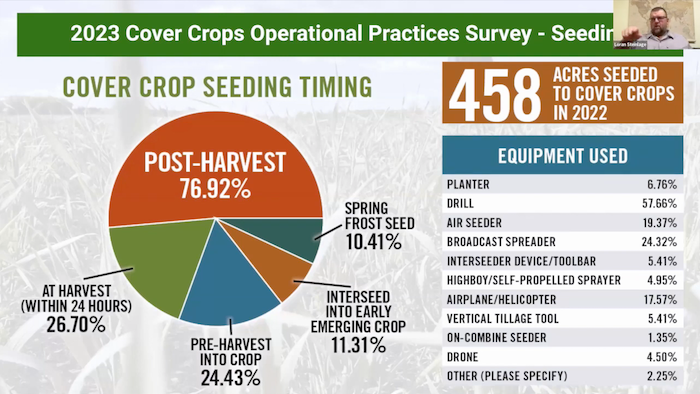Strip-Till Farmer editors encounter a variety of articles, social media posts, podcasts and videos that offer a unique look at the grower's world from the lofty digital realm. Here is our favorite content from the past week from across the web:
- Overcoming Heavy Clay Soils with Strip-Till
- What Cover Crops Are Best for My Soil? Consult the Cover Crops Periodic Table
- Does Placement of Phosphorous & Potassium Matter?
- Harnessing the Power of Potassium
- Ask the Operator: Help Me with Cover Crops!
Best of the Web This Week is brought to you by Copperhead Ag Products.
Made by farmers, for farmers.
Overcoming Heavy Clay Soils with Strip-Till
Mike Verdonck shares his 20-plus-year strip-till journey with RealAgriculture at the Commodity Classic in Orlando. “What we gained in yield, we also gained in organic matter,” he says. “Our soils have really changed over the years. Through that we worked a lot with cover crops and other techniques to try to build soil health.”
What Cover Crops Are Best for My Soil? Consult the Cover Crops Periodic Table
ST Biologicals, a Minnesota-based crop consultant group, recently posted to their Twitter page a cover crop periodic table to help cover crop beginners better understand different types of cover crops and which are best for different types of soil.
WHAT COVER CROPS ARE BEST FOR MY SOIL? That's a question that can only be answered by examining your fields. It's important to get the right mixture of cover crops and cash crops in a field rotation. Contact us today pic.twitter.com/c0uuKytVF6
— S T Biologicals (@ihempmarketing) March 15, 2023
Does Placement of Phosphorous & Potassium Matter?
University of Minnesota research Jeff Vetsch answers the above question in this presentation at the 15th annual Nutrient Management Conference. Fast forward to the 39-minute mark to see his recommendations for P & K depth in a strip-till system.
Harnessing the Power of Potassium
Successful Farming, with some help from the aforementioned Jeff Vetsch, shares 5 ways to get the most out of your K applications. “Some crops, especially corn, may respond to band applications of K,” Vetsch says, “but recent U of M research shows the yield benefit is relatively small and may not pay for the additional application costs compared to broadcast applications. But, if you’re banding in a strip-till-age system, keep doing it as it reduces K stratification. I’ve also seen yield responses to band applications over broadcast in reduced-till and no-till systems.”
Ask the Operator: Help Me with Cover Crops!
In this panel discussion, No-Till Farmer managing editor Michaela Paukner and No-Till Farmer's 2023 Conservation Ag Operator Fellow Loran Steinlage of West Union, Iowa, give you a first look at the results of the 4th annual Cover Crop Benchmark Study, a nationwide survey of hundreds of growers using cover crops, talk through key takeaways for successfully using cover crops and answer questions about how to be successful with cover crops on your operation.
Is there something you want to share in "This Week"? Send us an email.
Best of the Web This Week is brought to you by Copperhead Ag Products.
Made by farmers, for farmers.












